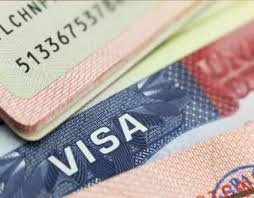HiGHLIGHTS
- The 60-day ban applies to those seeking permanent residency or green card holders, who are outside the US and do not have an immigrant visa that is valid on the midnight of Thursday
- Indians in line for an employer-sponsored green card will have to wait longer, especially if the order is extended
US President Donald Trump signed an executive order on Wednesday halting immigration for green card seekers for 60 days, ostensibly to protect the jobs of Americans laid off because of the covid-19 pandemic. Mint examines what this means for India and the world.
Whom does the Trump order apply to?
The 60-day ban applies to those seeking permanent residency or green card holders, who are outside the US and do not have an immigrant visa that is valid on the midnight of Thursday. The executive order will apply to those who do not have an official travel document other than a visa that is valid from that time or issued on any date thereafter, which permits the holders to travel to the US and seek entry or admission into the country. The order will be in effect for 60 days and the US administration will continue to monitor the labour market to amend or extend the proclamation if needed.
Who are exempt from this proclamation?
The order doesn’t apply to spouses and minor children of US citizens, healthcare professionals carrying out medical research or other research intended to combat the spread of covid-19, any member of the US Armed Forces and their spouses and children, and anyone entering for law enforcement or national security reasons. It also does not apply to investor visas and special immigrant visas for Iraqi and Afghan nationals, who have worked for the US government. People travelling to the US on temporary visas such as the H-1B or L1, typically used to bring in high-skilled technology workers, are also exempt.
What are the reasons for Trump to take this decision?
More than 20 million Americans have lost their jobs amid the coronavirus outbreak in the US, the world’s worst-hit country by cases and deaths. The US President said it would be unjust for Americans laid off by the virus to be replaced with new immigrant labour. Critics say Trump is using the coronavirus pandemic to pursue hard-line anti-immigration policies.
What does this order mean for Indians?
Indians in line for an employer-sponsored green card will have to wait longer, especially if the order is extended beyond 60 days, which Trump has alluded to. Close to 800,000 Indians are vying for green cards, says a study by Cato Institute, a US think tank, based on data from the US Citizenship and Immigration Services, which administers the visa process. Skilled Indian workers make up 75% of the employment-based backlog, and they face a wait of as many as nine decades if they could all remain in the line, as per Cato.
Is there a backlog for skilled Indian workers?
Yes. The Indian EB-2 (for professionals) and EB-3 (for skilled workers) backlog is the longest, affecting hundreds of thousands of skilled employees of US businesses with advanced or bachelor’s degrees. All in the current EB-2/EB-3 backlog applied in or after 2009. As per Cato, the share of Indian applicants for employment-based green cards plummeted from 91% of those who applied in 2009 or 2010 to 24% of those who applied in 2019 or early 2020. This means 75% of recent Indian applicants may not get the cards.


